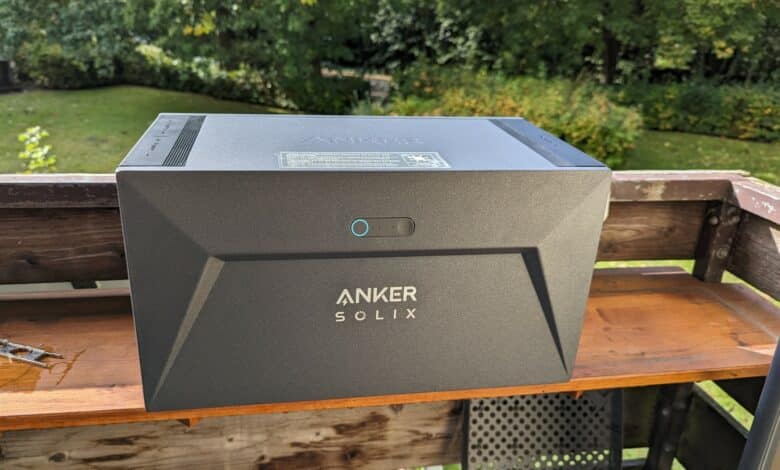
Balcony power plants are in vogue. They are a simple way to produce your own electricity cost-effectively and sustainably – and thus make yourself somewhat independent of the public power supply with its high prices. However, a major disadvantage of the balcony power plant is that a large proportion of the electricity cannot be used: What is not consumed immediately is lost. This does not seem very practical, especially in view of the strong fluctuations in solar radiation. Electricity storage systems that can store the surplus electricity and make it available later are intended to provide a remedy. With the solar bank from Anker, we have taken a closer look at one such device. What can the inexpensive Anker Solix solar bank do? And how practical is it? Find out all this and much more below!
Technical data
| Product name | Anker Solix Solar Bench E1600 |
| Dimensions | 23.2 x 24 x 42 cm |
| Bench weight | 20 kg |
| Rechargeable battery | 1.6 kWh |
| Protection | IP65 |
| Ambient temperature | -20 to 55 degrees Celsius |
| Price | € 44.99 * |

Scope of delivery and installation
When we opened the package in which the Powerstation was delivered, we were in for a pleasant surprise: everything we needed for installation was included. From the cable to the tools – we didn’t have to procure anything ourselves, but were able to get straight to work. In addition to the power station, which consists of just one part, the scope of delivery includes an MC4 key, two Y-cables and extension cables. The actual installation work is done quickly – also thanks to the fact that the solar bank consists of just one element.
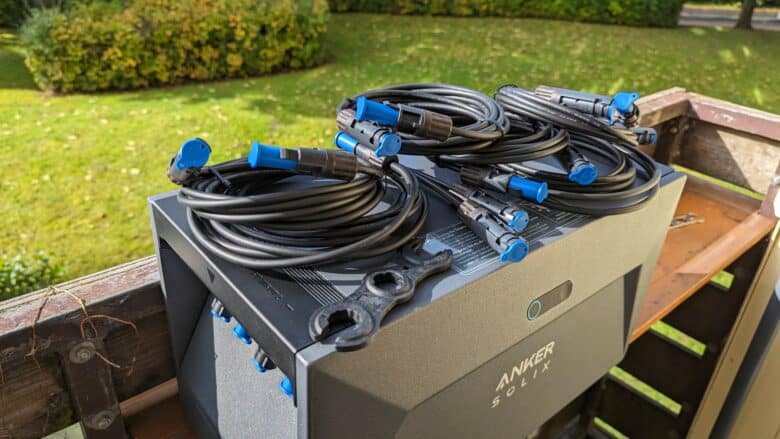
First, the solar bank must be connected to a micro inverter using the Y-cables supplied. Then the inverter must be connected to the power grid. The MC4 cables of the solar modules used must then be plugged into the ports of the power station. The extension cables included in the scope of delivery are used for this. This completes the installation of the device. In our practical test, it took us less than ten minutes. No prior knowledge or technical skills are required. However, a good physical condition is required: The solar bench weighs a hefty 20 kilograms, which we noticed again and again.
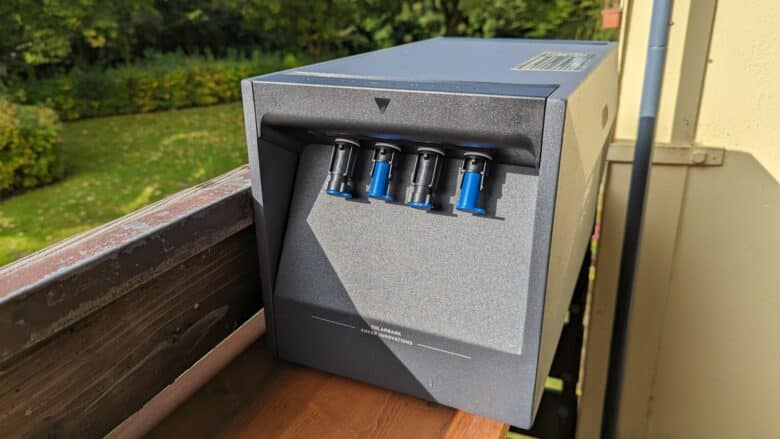
We found the workmanship of the Powerstation and the other components supplied to be exemplary. We never noticed any flaws here. It is worth mentioning that the solar bank is IP65-certified. This means that rain cannot harm it. However, this does not mean that it can be left outside all year round without any problems: It can only tolerate sub-zero temperatures to a limited extent. In winter, when the solar yield is likely to be negligible anyway, it should therefore be brought into the warmth.
The solar bench is designed for use with Anker power stations. We tested it with the Anker Solix RS40P balcony power station.
App for full functionality
To be able to use all the functions of the solar bank, an app must be downloaded after connecting it. This is available free of charge for both Android and iOS. An Anker account is required to log in to the app. If you do not yet have one, you must register with the manufacturer. Only then does the power bank setup process continue. Once this is done, the cell phone must be placed next to the power station with the app open. This is then automatically recognized by the app and can be added as a device. The rest of the setup is automatic. For example, the app ensures that the solar bank is equipped with the latest firmware version. In our practical test, this worked without any problems.
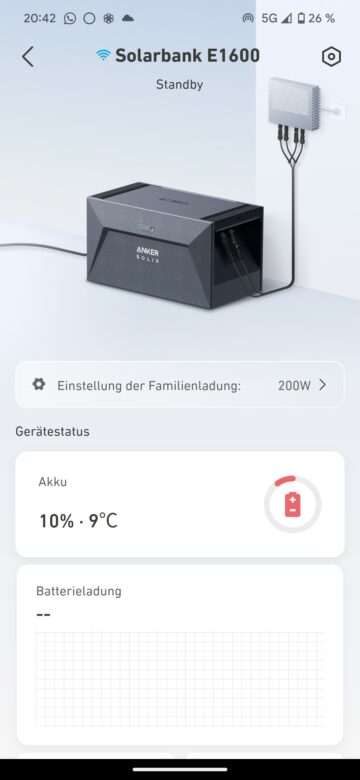
In further use, the app provides information on the battery status of the Powerstation as well as the electricity generated and its distribution to the household and solar bank. This is not just a useful feature, but a key one: it allows us to see what we are getting out of using the balcony power station and Powerstation – and take appropriate countermeasures if we notice any deviations from our targets.
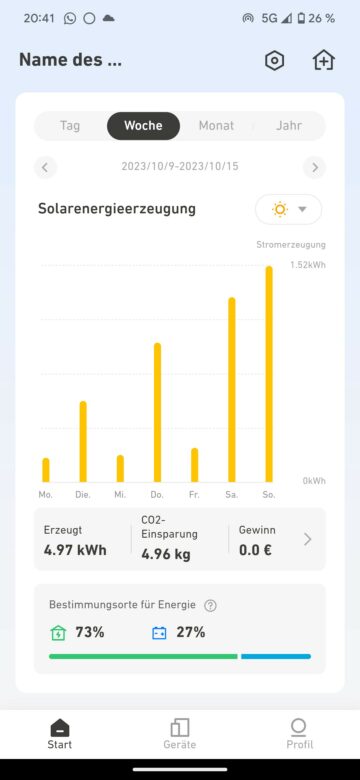
Performance of the solar bank: strengths and weaknesses
This brings us to what is probably the most important point: what exactly does the solar bank do in everyday life? The operating principle of the Powerstation is simple. It is designed to collect surplus electricity produced by the balcony power station and make it available later. This prevents the electricity produced from being fed into the grid and thus wasted. Ultimately, the solar bank ensures that we can operate more sustainably and save even more money.
Basic consumption can only be adjusted in stages
To do this, a few settings must first be made in the app. The setting for the household’s base load is particularly relevant here. This is the amount of electricity that is to be passed on directly to the household, i.e. consumed. The default setting here is 200 watts. This is a practical value for an average multi-person household. Only the electricity produced in excess of this 200 watts is stored. And this is probably the biggest problem with the Anker solar bank: the minimum value that can be set in the app is 150 watts. If you use significantly less than this 150 watts, you will still be giving away a lot of power – which contradicts the basic principle of the power station. The only alternative here is to set a value of 0. However, this means that paid electricity from the electricity provider is used to cover the basic requirement – which is also not ideal.
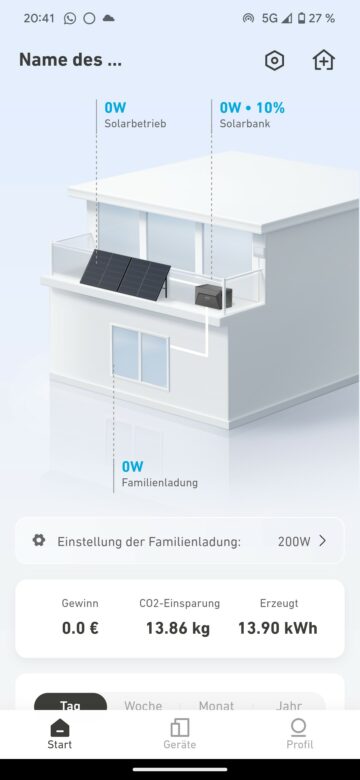
Other power stations, which are more expensive than the Anker solar bank, offer more. For example, they automatically register the current power consumption and adjust their power distribution accordingly. The Solarbank cannot do this. However, if you can live with the fact that you are always giving away a little power, you are still well served with it. In our test, we were able to show that it does its job very well within the set limits. We only noticed slight delays after changing the desired basic power supply.
No additional feed-in with little sun
On the other hand, the fact that the solar bank is not able to compensate for reduced output from the solar panels by feeding in power from its storage system is unfortunate. In concrete terms, this means that if a feed-in of 200 watts is planned, but the solar panels only supply 150 watts due to low solar radiation, only these 150 watts are fed in – even if the storage tank is full. This in turn means that 50 watts have to be purchased and paid for from the electricity provider, even though stored electricity is actually available. There are no such design problems with more expensive models. Ultimately, this means that opting for the Anker solar bank is a decision for an inexpensive but not optimal solution. The pros and cons should be weighed up carefully beforehand.
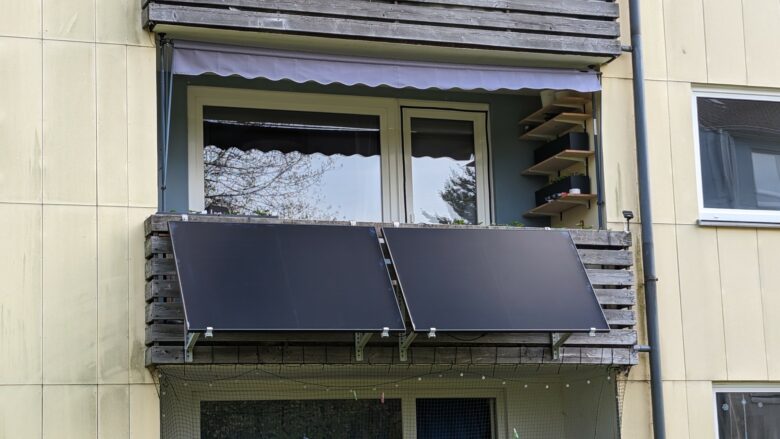
Expansion options and miscellaneous
The storage can be expanded by connecting two models of the solar bank together. However, we did not try this out in our test as we only had one device at our disposal. We were also unable to make any statements about the lifespan of the device – which is due to the short test period. Anker claims a service life of 6,000 charging cycles, which corresponds to around 15 years with average use. This value is quite high compared to competitor products. However, it will be many years before we can say to what extent it will be achieved in practice.
Conclusion on the solar bank: Good and inexpensive
In conclusion, the Anker solar bench is an inexpensive and solid device, but it does have some weaknesses. If you want to make a more price-conscious purchase, you can accept these, as the resulting waste of electricity is likely to be rather low. In comparison, the purchase of a much more expensive appliance is unlikely to be worthwhile for most private households. Overall, we can therefore recommend the Solarbank despite the problems that have been identified, with reference to the price-performance ratio.
Anker Solix Solarbank E1600
Installation
Performance
App
Value for money
81/100
Although the solar bench power station has a few conceptual weaknesses, its good price-performance ratio is impressive.





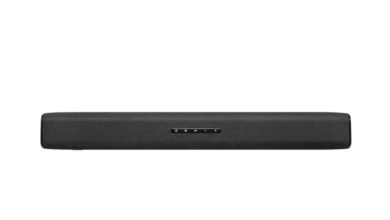

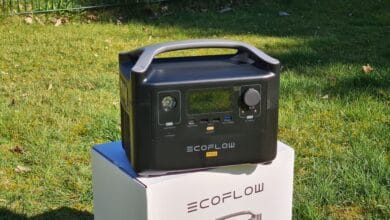

No replies yet
Neue Antworten laden...
Gehört zum Inventar
Beteilige dich an der Diskussion in der Basic Tutorials Community →